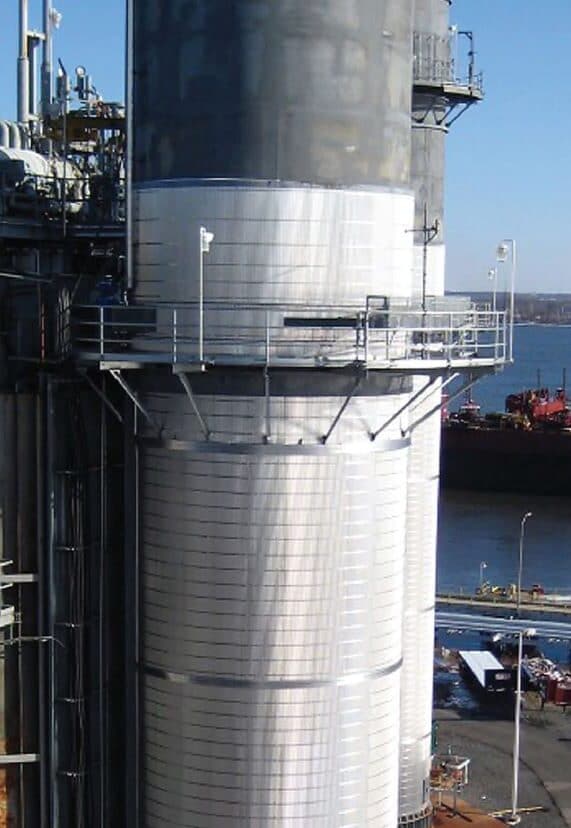Stack Dampers
Adding a stack damper and insulating the HRSG exhaust stack will prolong a site’s ability to maintain hot or warm start conditions. The addition of a damper will also improve reliability by minimizing fatigue damage from cycling associated with cold starts and will improve efficiency by minimizing the heat absorption required to get back to a steady operating temperature during startup. Stack dampers and stack insulation also play a critical role in the effectiveness of steam sparging.
There are two primary ways that the stack damper helps keep the heat in the HRSG. One is by reducing the draft flow through the HRSG. While the HRSG is shut down, a draft flows through the CT and HRSG, cooling the coil bundles. As the turbine manufacturers do not provide the effective open area in the turbine, it is assumed that the stack is the restrictive portion of the draft. A closed stack damper restricts the open area in the stack, creating an orifice effect. With less flow passing through the HRSG, less heat is lost, allowing the unit to maintain a hot/warm start for a longer period. The second way that a damper helps retain heat in the HRSG is by reducing the amount of casing area where heat can be lost. The stack damper is typically located near the elevation of the main platform area, reducing the amount of stack area where heat can be lost.


Stack Insulation
Heat loss can be further reduced by placing insulation on the outside of the stack and breeching up to the height of the damper. After shutting down and closing the stack damper, the temperature of the bottled-up exhaust gas will begin to normalize. Heat will migrate from the HP Evaporator towards the stack. The stack is made from thin steel and it will be a significant source of heat loss if left uninsulated.




